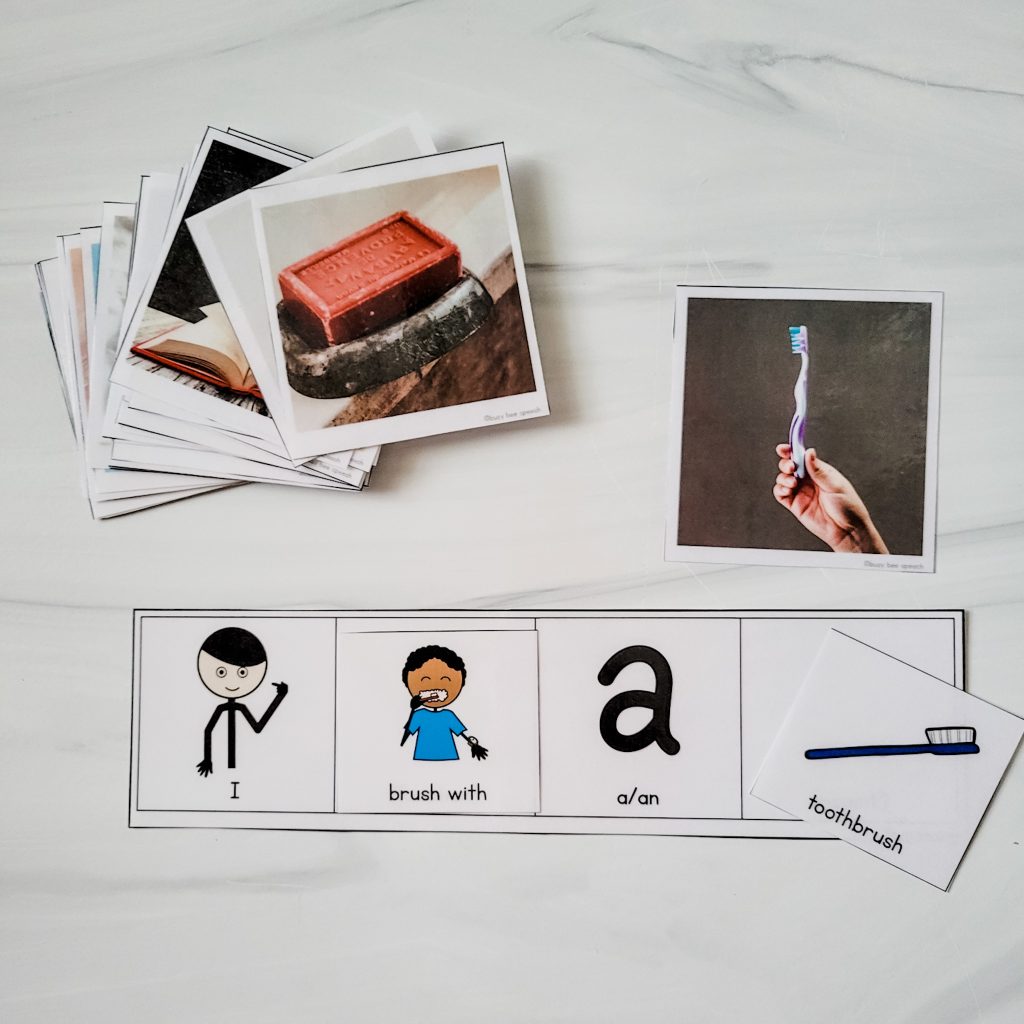One of my most common preschool language goals in speech therapy is object functions. In order to teach a skill effectively, you want to be really confident in the why and how of what you’re doing, right? Today, we’re chatting about the benefits of teaching functions and a few quick tips on how to do it!

WHY TARGET OBJECT FUNCTIONS IN PRESCHOOL LANGUAGE GOALS
We don’t target concepts just to target them. There are several benefits to building language skills by showing a child the uses of an object. Here are my top five reasons to teach object functions:

1. It expands the vocabulary
When a child shows an understanding of action verbs, we can expand language skills further by linking a verb to an object.
2. It improves conversation skills
As the vocabulary expands, conversation abilities expand. As kids understand the links between objects and their actions, they begin to form sentences and answer questions around them.
3. It establishes connections between objects and people
Teaching functions helps push students beyond labeling an object. It shows the relationship that people have with objects.
4. It helps the child make inferences about objects
A child can begin to extend the actions to similar objects once they have a good understanding and lots of practice with the use of an object.
5. Functions serve as cues to categorization
When students begin to understand that many items can serve the same function, they can start to categorize them by use. This can lead to understanding categories.
HOW TO TEACH OBJECT FUNCTIONS
In a study by Deak (2006), they explain that as children are acquiring the concept of function, the quality of experience matters, and the quantity of experience matters.
- Quality of experience includes social factors – Toddlers were more likely to recall a series of actions with objects if they had gotten to imitate the action than if they merely watched it.
- Quantity of experience – Preschoolers who saw object use demonstrated over several sessions demonstrated better memory of the actions and a greater ability to extend the actions to other objects.
Tips for teaching functions:
- Use real objects first! Give children the hands-on experience of using the actual object and talking about the function.
- Repetition and practice. Demonstrate how the same objects are used over several sessions. Extend to different types of the same object, then pictures of the objects.
- Videos or GIFs of the objects in action are also good ways to demonstrate how the objects function, especially if you do not have access to all the objects.
- Use a variety of cards, activities, toys, and homework pages to reinforce the functions of the objects you target.
Object Function Mini Unit
If you want a huge variety of research-based ideas and hands-on activities for functions all in one package, then you may want to check out this Object Functions Mini-unit!
I like this unit because it makes me feel more confident in knowing the research-based strategies to target functions with my littles. The students are having fun with hands-on activities but are learning important communication skills at the same time.
Here are a few of my favorite things about this resource:
- The activities are research-based and include tips for targeting functions with your students.
- It includes sensory bin activities, task cards, an interactive book, and play dough activities.
- The activities include both clipart AND real pictures for a variety of targets.
- There are several take-home pages, including a parent tip sheet with ideas for targeting object functions at home.
- It includes a DIGITAL version of four different activities (including interactive GIFs!), which is perfect for teletherapy or for using with a tablet in speech.
- The variety of activities can cover on-the-go, push-in therapy, or speech room sessions.
- My students stay engaged with all of the hands-on learning tasks included.
Learn more about it on TPT here. I hope some of these tips help you. Let me know your favorite ideas on how you teach functions to your students!















Leave a Reply